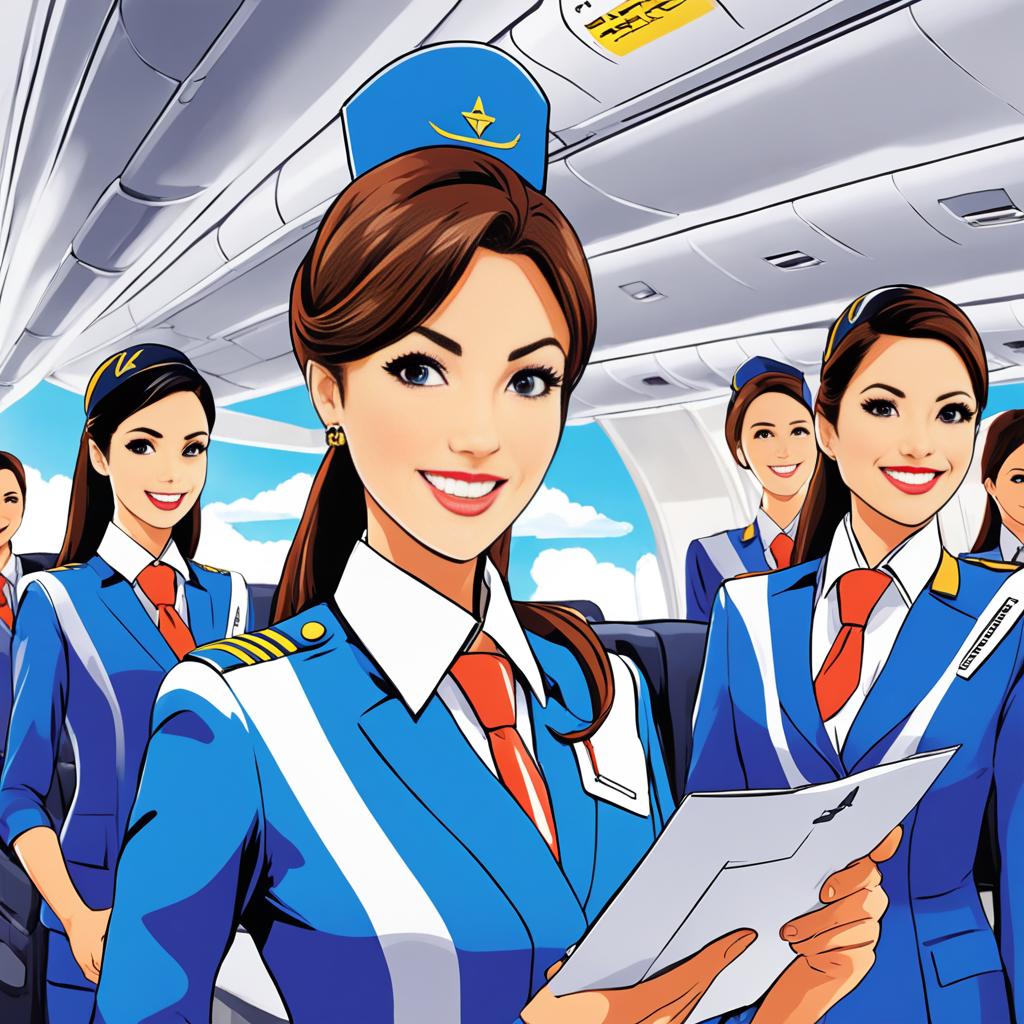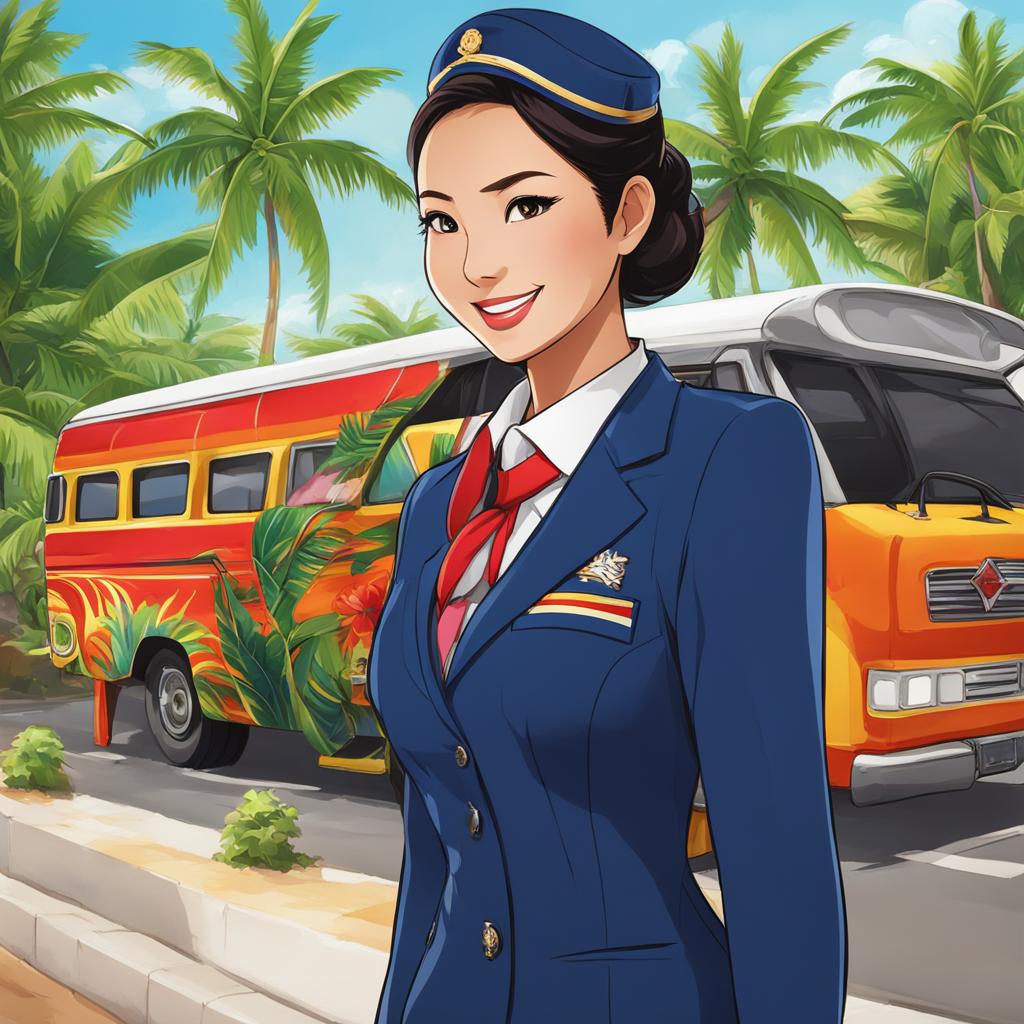Have you ever wondered how much it costs to embark on a career as a flight attendant in the Philippines? The journey to becoming a flight attendant involves rigorous training and education, but what about the financial investment? How much do aspiring flight attendants need to budget for their tuition fees? Let’s explore the cost of flight attendant training in the Philippines and discover what it takes to soar in this exciting profession.
When it comes to flight attendant training, the Philippines offers several reputable schools and academies that specialize in equipping individuals with the necessary skills for a successful career in the aviation industry. From WCC Aeronautical and Technical College to FATI Flight Attendant Training Institute, these institutions provide comprehensive programs tailored to meet the demands of this unique profession.
While the fees for flight attendant courses can vary depending on the school, you can expect to budget anywhere from 120,000 to 160,000 Philippine pesos per year for your tuition. However, it’s important to note that these figures are subject to change, so it’s essential to reach out to the specific institute for the most accurate and up-to-date fee information.
So, are you ready to take off on a captivating journey and turn your dream of becoming a flight attendant into a reality? Let’s dive deeper into the details and requirements of flight attendant courses in the Philippines in our next section.
Flight Attendant Course Details and Requirements

To become a flight attendant in the Philippines, you will need to successfully complete a flight attendant course at a recognized training institute. These courses provide the necessary knowledge and skills to ensure a safe and enjoyable travel experience for passengers.
The duration and curriculum of flight attendant courses may vary depending on the school or academy you choose. However, there are common topics that are typically covered in these courses:
- Aviation Safety: Learn about the importance of safety protocols and procedures on board an aircraft.
- In-flight Service: Discover how to provide excellent customer service and attend to passengers’ needs during a flight.
- Emergency Procedures: Gain the knowledge and confidence to handle emergency situations, such as evacuations or medical emergencies.
- Customer Service: Understand the importance of delivering exceptional customer service and creating a positive travel experience for passengers.
In addition to completing the flight attendant course, there are certain requirements that aspiring flight attendants must meet in order to pursue this career:
- Minimum Height: Some airlines have specific height requirements for flight attendants, typically ranging from 5’2″ to 5’9″.
- Age: Applicants must be at least 18 years old to become a flight attendant in the Philippines.
- Educational Qualifications: While a high school diploma is the minimum requirement, some airlines prefer candidates with a college degree in a related field, such as tourism, hospitality, or communications.
It is important to note that specific requirements may vary between airlines and training institutes, so it is advisable to check with the school or academy of your choice for their detailed course requirements and eligibility criteria.
Average Salary of Flight Attendants in the Philippines
When considering a career as a flight attendant in the Philippines, one important aspect to consider is the average salary. Flight attendants in the Philippines typically earn an average annual salary of approximately 1,040,000 Philippine pesos. This comprehensive compensation package includes the basic salary, productivity pay, as well as various allowances and benefits.
The average monthly salary for flight attendants in the Philippines amounts to around 80,000 Philippine pesos. However, it’s crucial to note that the actual salary can vary based on several factors such as experience, the airline they work for, and the specific position within the company.
Flight attendants play a crucial role in ensuring the safety and comfort of passengers during flights. Their responsibilities extend beyond serving meals and providing in-flight services. They undergo extensive training to handle emergency situations, perform safety procedures, and deliver top-notch customer service.
Airlines invest a significant amount of resources in the training and skill development of their flight attendants. This is reflected in the competitive salary and compensation packages offered to these highly trained professionals. The remuneration not only rewards their dedication and hard work but also serves as an incentive for them to continuously enhance their skills and knowledge.
Flight Attendant Salary Breakdown
Let’s take a closer look at the breakdown of a flight attendant’s salary in the Philippines:
| Component | Amount (annually) |
|---|---|
| Basic Salary | 700,000 PHP |
| Productivity Pay | 120,000 PHP |
| Allowances | 180,000 PHP |
| Benefits | 40,000 PHP |
As shown in the table above, the basic salary constitutes the majority of a flight attendant’s annual income. Productivity pay is often based on factors such as the number of flights attended and the performance of the flight attendant. Allowances cover expenses like transportation, accommodation, and meal allowances. Additionally, flight attendants enjoy various benefits such as medical insurance and retirement plans.
Opportunities for Advancement and Increased Compensation
Flight attendants in the Philippines have opportunities for career advancement and increased compensation. With experience and exceptional performance, flight attendants can progress to higher positions within the airline, such as senior flight attendant or cabin crew supervisor. These career advancements bring additional responsibilities and increased earning potential.
Furthermore, flight attendants can also explore opportunities to work for international airlines, which may offer higher salary packages. Continuing education and obtaining additional certifications in areas such as safety management or customer service may also open doors to higher-paying positions.
It’s important to note that flight attendants are an integral part of the airline industry, ensuring the safety and satisfaction of passengers. As such, their salary and compensation reflect the value they bring to the airline and the importance of their role in enhancing the overall flying experience.
Cost of Training and Equipment

When pursuing a career as a flight attendant in the Philippines, it’s essential to consider the cost of training and the necessary equipment. The total expenses for flight attendant training can range from 350,000 to 500,000 Philippine pesos per attendant. This investment covers the comprehensive training program designed to equip aspiring flight attendants with the skills and knowledge required for their role.
Flight attendants undergo rigorous training to ensure they can effectively handle emergency situations, provide exceptional in-flight services, and prioritize passenger safety. The cost of training also includes the salaries of experienced trainers and instructors who impart their expertise to aspiring flight attendants.
In addition to the training itself, flight attendants are equipped with the essential equipment needed to perform their duties. This includes items such as jump-and-slide equipment, cabin door simulators, fire fighting equipment, and medical training supplies. These tools are vital to ensure flight attendants are prepared for any potential emergencies or medical situations that may arise during a flight.
Aviation first aid training is also provided to flight attendants, enabling them to respond promptly and effectively in medical emergencies. The cost of this specialized training can range from 100,000 to 200,000 Philippine pesos per attendant, emphasizing the importance placed on the safety and well-being of both the crew and passengers.
Investing in flight attendant training and equipment is crucial for airlines to maintain the highest industry standards and ensure the safety and satisfaction of their passengers. It is a testament to the commitment of airlines and flight attendant academies in the Philippines to prepare and equip flight attendants with the necessary skills and resources to excel in their roles.
Additional Costs and Benefits of Being a Flight Attendant

Becoming a flight attendant in the Philippines comes with its own set of additional costs and benefits. While there are expenses associated with uniforms and wellness programs, there are also exciting perks that make the job rewarding.
Uniform Expenses
Flight attendants are required to wear uniforms that are meticulously designed by renowned fashion designers. These uniforms exude elegance and professionalism, ensuring that flight attendants make a lasting impression. However, these designer uniforms can come at a cost of up to 5,000 Philippine pesos per set.
Investment in Health and Wellness
Airlines in the Philippines heavily invest in the health and wellness of their flight attendants. They provide comprehensive health and wellness programs to ensure that flight attendants are physically and mentally fit to perform their duties. These programs often include fitness classes, yoga sessions, and wellness workshops. While these programs are designed to enhance overall well-being, they may come with a cost of around 3,000 Philippine pesos per month.
Travel Benefits
One of the most enticing benefits of being a flight attendant is the opportunity to travel. Flight attendants enjoy the privilege of free flights for themselves and their immediate family members. This allows them to explore new destinations and create lasting memories. Whether it’s a tropical getaway or an urban adventure, flight attendants have the freedom to jet off to exciting locations.
| Additional Costs | Benefits |
|---|---|
| Uniform expenses (up to 5,000 PHP per set) | Free flights for flight attendants and immediate family members |
| Health and wellness program costs (around 3,000 PHP per month) | Opportunity to explore new destinations |
Career Advancement and Opportunities
As a flight attendant in the Philippines, you have excellent opportunities for career advancement and growth within the industry. Your journey doesn’t have to end at serving passengers in the cabin; there are various paths you can explore to expand your horizons and take your career to new heights.
One possible career progression is moving into supervisory roles, such as a flight attendant supervisor or base manager. In these positions, you will oversee the work of other flight attendants, ensuring smooth operations and excellent customer service. You’ll have the chance to lead and mentor a team, sharing your knowledge and experience to shape the next generation of flight attendants.
Another exciting opportunity is to take on additional responsibilities, such as recruiting and training new flight attendants. Your expertise and firsthand experience make you a valuable asset in identifying and nurturing talent. By contributing to the growth and development of new recruits, you play a crucial role in shaping the future of the aviation industry in the Philippines.
If you prefer a less travel-intensive role, you can transition to administrative positions within the airline. These roles may involve handling tasks related to scheduling, crew management, or coordinating in-flight operations. Your skills in communication, organization, and problem-solving will be put to use behind the scenes, ensuring a seamless and efficient airline operation.
Moreover, with additional education and training, you can explore other areas of the aviation industry. For example, you could pursue a specialization in risk management, focusing on safety protocols and emergency preparedness. Alternatively, you could delve into the field of human resources, utilizing your people skills to recruit and manage aviation personnel. These avenues offer exciting career prospects and the opportunity to make a significant impact in shaping the industry.
Remember, your journey as a flight attendant doesn’t have to be limited to the cabin. Take advantage of the diverse career advancement opportunities available to you in the Philippines. Whether you choose to progress within the realm of flight attendants or venture into other areas of aviation, the sky is the limit for your career aspirations.
Education and Employment Opportunities
Becoming a flight attendant in the Philippines typically requires a high school diploma, but having a college degree can enhance your chances of securing a position. Airlines often prefer candidates with degrees in people-oriented fields such as communications, psychology, nursing, and hospitality. These degrees provide a strong foundation in customer service and interpersonal skills, which are essential for the role of a flight attendant.
Completing a flight attendant training program can also give you an advantage in the competitive job market. These programs offer specialized training in areas like aviation safety, emergency procedures, and in-flight service. They equip you with the necessary skills and knowledge to excel in your career as a flight attendant.
When it comes to employment opportunities, flight attendants in the Philippines have a range of options. You can find opportunities with regional and commuter airlines, low-cost carriers, and charter airlines. These airlines offer both domestic and international flights, providing you with a diverse range of destinations to explore. Additionally, flight attendants may also find employment in industries related to hospitality and customer service, leveraging their excellent communication skills and customer-centric mindset.
In conclusion, while a high school diploma is the minimum requirement, pursuing higher education and completing a flight attendant training program can enhance your prospects of securing a position as a flight attendant in the Philippines. The field offers exciting employment opportunities with various airlines, both domestic and international. So, if you have a passion for travel, love working with people, and possess the necessary skills, a career as a flight attendant might be the perfect fit for you.
FAQ
Q: How much is the tuition for a flight attendant in the Philippines?
A: The cost of becoming a flight attendant in the Philippines can vary depending on the school or academy you choose. The fees for the flight attendant course at some of the best flight attendant schools in the Philippines, such as WCC Aeronautical and Technical College, FATI Flight Attendant Training Institute, and International Cabin Attendant Training School, can range from 120,000 to 160,000 Philippine pesos per year. It is important to note that these fees are subject to change, so it is best to contact the specific institute for the most accurate and up-to-date fee information.
Q: What are the details and requirements of a flight attendant course in the Philippines?
A: To become a flight attendant in the Philippines, you will typically need to complete a flight attendant course at a recognized training institute. The course duration and curriculum may vary depending on the school, but some common topics covered include aviation safety, in-flight service, emergency procedures, and customer service. In addition to completing the course, you may also need to meet certain requirements such as a minimum height, age, and educational qualifications. It is advisable to check with the specific school or academy for their detailed course requirements.
Q: What is the average salary of a flight attendant in the Philippines?
A: The average salary of a flight attendant in the Philippines is typically around 1,040,000 Philippine pesos per year, inclusive of basic salary, productivity pay, allowances, and other benefits. This amounts to an average monthly salary of about 80,000 Philippine pesos. However, it is important to note that salaries can vary depending on factors such as experience, airline, and position within the company. Flight attendants are highly trained professionals, and airlines invest a significant amount in their training and skill development.
Q: How much does flight attendant training and equipment cost in the Philippines?
A: The cost of training a flight attendant in the Philippines can range from 350,000 to 500,000 Philippine pesos per attendant. This includes the cost of equipment such as jump-and-slide equipment, cabin door simulators, fire fighting equipment, and medical training supplies. Flight attendants undergo extensive training to handle emergency situations and provide in-flight services. The cost of this training also covers the salaries of trainers and instructors. Additionally, flight attendants receive aviation first aid training, which can cost around 100,000 to 200,000 Philippine pesos per attendant.
Q: What are the additional costs and benefits of being a flight attendant in the Philippines?
A: In addition to tuition and training costs, there are some additional expenses and benefits associated with being a flight attendant in the Philippines. Flight attendants are required to wear uniforms, which are designed by renowned fashion designers and can cost up to 5,000 Philippine pesos per set. Airlines also invest in the health and wellness of their flight attendants, providing them with a health and wellness regimen that may cost around 3,000 Philippine pesos per month. Flight attendants also enjoy travel benefits, including free flights for themselves and their immediate family members.
Q: What are the career advancement and opportunities for flight attendants in the Philippines?
A: Flight attendants in the Philippines have opportunities for career advancement and growth within the industry. Some flight attendants may progress to supervisory roles, such as flight attendant supervisor or base manager. They may also take on additional responsibilities, such as recruiting and training new flight attendants or developing in-flight products. Flight attendants who do not want to travel as frequently may transition to administrative roles within the airline. With additional education and training, flight attendants may also explore other areas of the aviation industry, such as risk management or human resources.
Q: What are the education and employment opportunities for flight attendants in the Philippines?
A: While a high school diploma is the minimum educational requirement to become a flight attendant in the Philippines, many airlines prefer applicants with a college degree. Degrees in people-oriented disciplines like communications, psychology, nursing, and hospitality are especially desirable. Flight attendant training programs may also give applicants an advantage. Job opportunities for flight attendants can be competitive, but opportunities are available with regional and commuter airlines, low-cost carriers, and charter airlines. Flight attendants may also find employment in industries related to hospitality and customer service.
